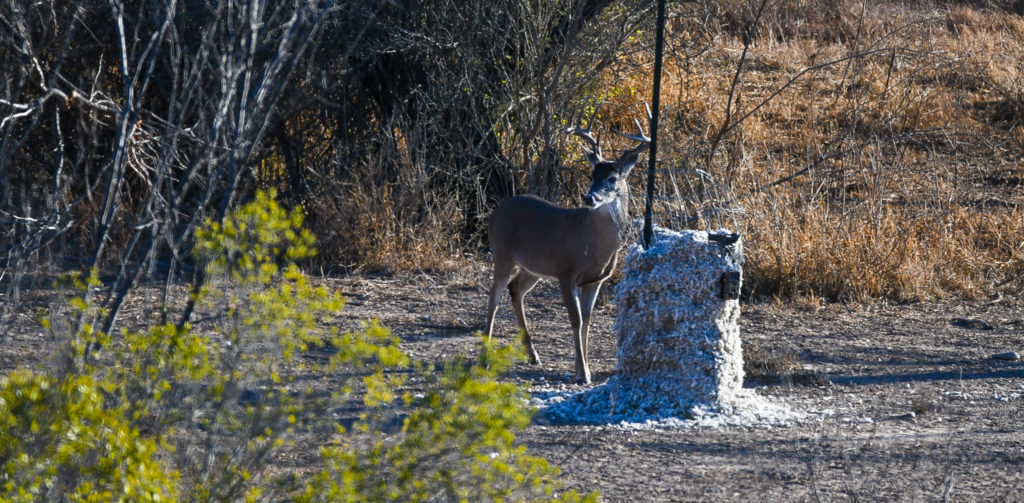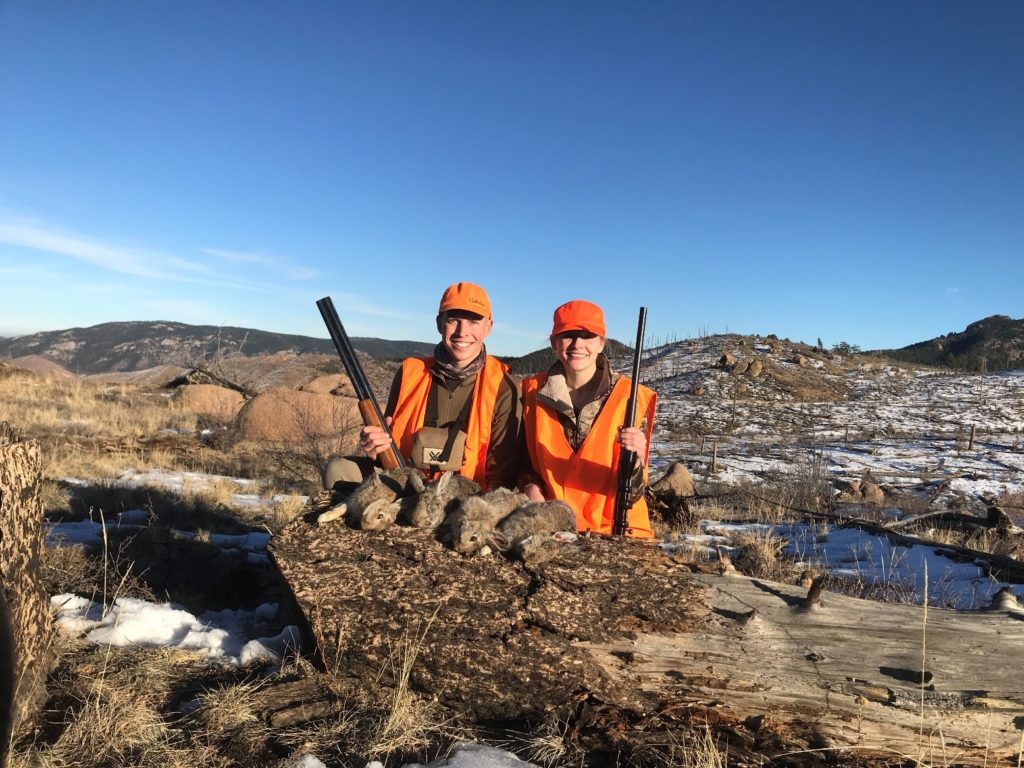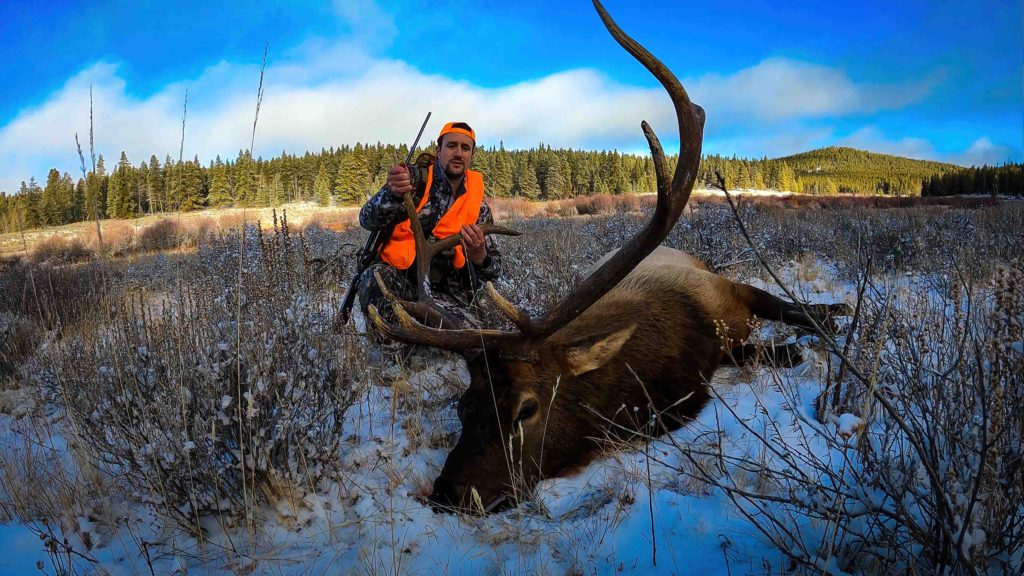As a guy who grew up around hunting, going as far back as I can remember, I’ve experienced a lot. Everything from chasing monster whitetail bucks, to calling in turkey toms so close that they practically sit on you, and so much more. But of all the things I’ve done and been a part of, nothing has quite prepared me for my next challenge of backcountry elk hunting.
This November I embark on my first ever backcountry elk hunt. I drew a bull elk tag in Southwestern Colorado and couldn’t be more excited. Even though I’ve anticipated this opportunity for a while, I’m pretty nervous. This is an utterly foreign type of hunting, in a place I’ve never even stepped foot. The fact is that I don’t know what I don’t know and that’s what makes this all the more nerve racking, challenging, and thrilling.
Elk Hunting Research
I started my research on google, as any good millennial will. My initial search yielded 358,000 results in under a second. Incredible. Thanks to the explosion in popularity of Meat Eater over the past decade, I started with those results. If the result came from their site or from one of the company’s mentioned on their podcast, I checked it out.
What I quickly discovered was a not-so-subtle style of advertising poorly disguised as articles and blog posts. After the first few pages, I noticed the pattern. While each article did contain a few useful tidbits, their true goal wasn’t to inform. What They really wanted to for me to subscribe, purchase, or click their ads.
Don’t get me wrong, I get it. When you’re running a website, just like any other business, you’ve got to make money. I’d be lying if I said I didn’t want you to subscribe to this site, but I’m also not throwing it in your face on each visit. Eventually it started to feel disingenuous, and I decided to tap into a different source of knowledge.
Tribal Knowledge
When I got fed up with google I reached out to some friends who spent time in the backcountry. These are folks that I met when I was a kid, as well as connections made through running and growing this website. When I told them my dilemma, as a backcountry noob, they were eager to share their tips and tricks. This is where the tribal part comes in. As it was in ancient times, their knowledge passed to me through stories told rather than written.
Each person I talked to recommended gear, gave pre-trip fitness techniques, and provided scouting advice among other things. When I wrapped up my chat with each friend, I felt a little closer to understanding what this hunt might take. But this just meant it was time to get to work.
Practice Makes Perfect
After talking to the guys two things were clear. First, having the right gear will be crucial to a successful hunt. Second, fitness is paramount. Since the elk season I’m hunting is only 8 days long, I need to be in optimal shape so I can hunt relentlessly. Unlike the months long whitetail season of South Texas, I’ve only got a handful of days to get a bull elk on the ground in Colorado.
Since there are tons of high quality options available online, I decided that gear can come second. Priority number one for me is fitness. For this, in addition to my regular strength workouts, I adopted a daily walking routine. Although walking seems simple and low effort, it provides cardio, burns calories, and helps strengthen my legs for a potential pack out.
After a few months of averaging 3 miles walked per day, it was time to add weight. So I got set up with a 30 pound plate carrier pack from GORUCK and hit the trail with my new challenge. The added weight helps increase my level of effort, calories burned, and prepares my legs and back to carry a pack through the Colorado mountains. This also get my body accustomed to hauling extra weight on my back, in the event that I manage to harvest an elk and have to pack it out over several miles.
Scouting and Getting Acclimated
No matter how good of shape I’m in, there’s an element of this hunt that I simply cannot prepare for. That being the altitude and potential altitude sickness. To combat this, since I live much closer to sea level, I’m planning to arrive at elk camp a full 2 days prior to season. According to my sources, this should give me Texas boys plenty of time to adjust to the altitude and thinner air.
An added benefit of arriving early is that i will be able to use that time to scout for elk and familiarize myself with the area. That way when I set out before daylight on the opening day of season, I’ll have a little bit of an idea where I’m headed. Knowing that I will have time to scout and familiarize myself is really easing my nerves about hunting in a foreign environment.
What’s Next
Well I’ve been training for 3 months. Even though I didn’t find out about my bull elk tag until early June, I got a head start on physical prep. So I feel like I’m way ahead of the game in that department. The plan is to stay consistent and continue pushing myself in the strength and cardio departments from now until season.
Eventually I’ll have to purchase (or borrow) gear. Unfortunately that means going back to google for research, which I’m sure will be even more packed with ads than my first experience. As I look for the packs, clothing layers, and tools that will work best for me, I’ll keep track of my experience so I can pass on any useful hints.
Featured Image via Michael Gomez


